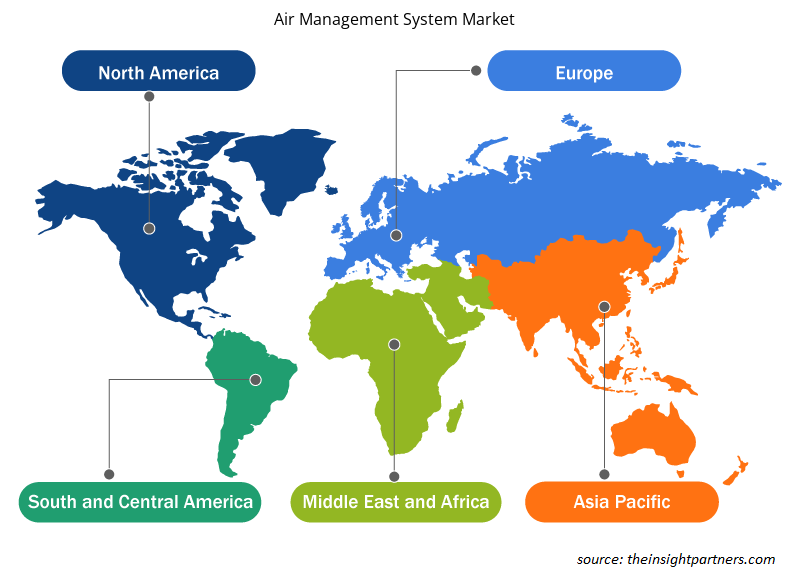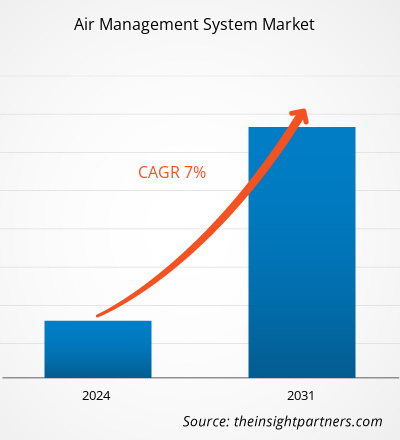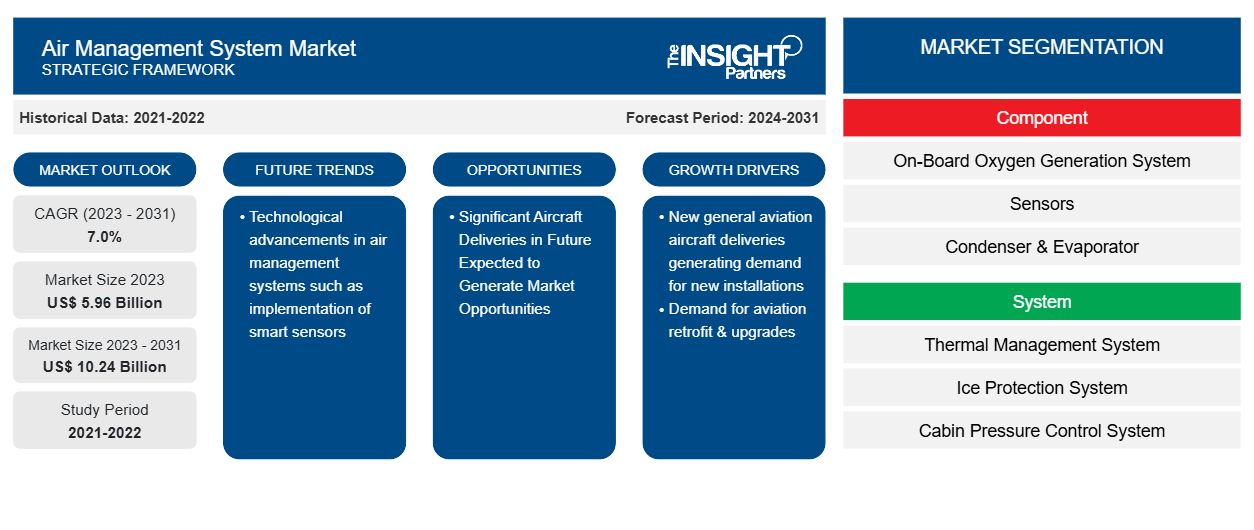空气管理系统市场规模预计将从 2023 年的 59.6 亿美元增至 2031 年的 102.4 亿美元。预计 2023-2031 年期间市场复合年增长率将达到 7.0%。空气管理系统的技术进步(例如智能传感器的实施)可能仍是市场的主要趋势。
空气管理系统市场分析
空气管理系统市场的生态系统是多样化且不断发展的。其利益相关者包括供应商、零部件、飞机制造商和最终用户。领先企业占据着市场生态系统的各个节点。原材料供应商向零部件制造商供应材料,利用这些材料制造和设计最终产品。然后,最终产品通过不同的媒介供应给飞机制造商,例如通过公司分销商直接销售或通过第三方分销商进行第三方销售。然后,飞机制造商或 OEM 将飞机零部件集成到各自的飞机型号中。
空气管理系统市场概况
空气管理系统市场由几家知名企业组成,其中前五大供应商占据约 25% 的市场份额,并定期从最终用户采购各自的产品。空气管理系统市场参与者在各种参数上相互竞争,包括技术、交货时间和定价等。这些参数增强了市场参与者之间的竞争力,并有望在空气管理系统市场参与者之间保持高水平的竞争。
定制此报告以满足您的需求
您可以免费定制任何报告,包括本报告的部分内容、国家级分析、Excel 数据包,以及为初创企业和大学提供优惠和折扣
-
获取此报告的关键市场趋势。这个免费样品将包括数据分析,从市场趋势到估计和预测。
空气管理系统市场驱动因素和机遇
航空改装和升级的需求
全球大量老旧商用航空机队的存在,催生了对现有机队进行改装和升级的需求。此外,新飞机 MRO机库和 MRO 舱的启用与不同空气管理系统的需求成正比,这是空气管理系统市场强大的催化剂之一。此外,由于现有飞机机队的扩张,航空公司不断投资于飞机升级,这也推动了全球对空气管理系统的需求。例如,印度航空业的领导者之一 InterGlobe Aviation Ltd.(靛蓝航空)于 2019 年与班加罗尔国际机场有限公司 (BIAL) 签署了一项为期 20 年的协议,将在印度建造第二家 MRO 设施。根据该公司的声明,新机库可为两架窄体飞机和一台发动机提供服务 MRO。
未来大量飞机交付预计将创造市场机会
多年来,商用航空业一直保持着强劲的机队规模,空中客车和波音是交付统计数据方面最值得注意的两家飞机制造商。随着新低成本航空公司 (LCC) 的出现以及全服务航空公司 (FSC) 采取的机队扩张战略,商用航空业在过去几年中经历了巨大的增长。由于航空旅行乘客数量和飞机采购量的增加,预计未来几年商用航空业将激增。此外,未来商用和军用飞机的预期交付是未来几年可能为市场供应商创造新机会的主要因素之一。例如,根据波音和空中客车的预测,2023-2042 年期间全球可能会交付超过 40,800 架商用飞机。
空气管理系统市场报告细分分析
有助于得出空气管理系统市场分析的关键部分是组件、系统和平台。
- 根据组件,空气管理系统市场细分为车载氧气生成系统、传感器、冷凝器和蒸发器、空气循环机、控制和监控电子装置等。空气循环机部门在 2023 年占据了更大的市场份额。
- 根据系统,空气管理系统市场细分为热管理系统、防冰系统、机舱压力控制系统、油箱惰化系统、氧气系统和发动机引气系统。热管理系统部门在 2023 年占据了更大的市场份额。
- 根据平台,空气管理系统市场分为固定翼和旋翼。固定翼部分在 2023 年占据了更大的市场份额。
空气管理系统市场份额按地区分析
空气管理系统市场报告的地理范围主要分为五个区域:北美、欧洲、亚太、中东和非洲、南美。
2023 年,亚太地区将占据市场主导地位,其次是北美和欧洲地区。此外,亚太地区在未来几年也可能见证最高的复合年增长率。中国在亚太空气管理系统市场中占有主要份额,而印度很可能成为未来几年全球最具吸引力的空气管理系统市场之一。中国已经超过美国最大的航空市场,成为全球增长最快的航空市场之一。预计未来 20 年中国对飞机的需求将很高。例如,根据空客的预测,2023 年至 2042 年期间,中国可能会交付超过 9,400 架商用飞机。此外,随着国内外制造商的飞机产量不断增加,从长远来看,飞机 MRO 活动将转向亚太地区,因为中国和东南亚正在努力确立其作为 MRO 中心的重要性。世界各地的公司都在致力于将业务扩展到中国;例如,赛峰集团已将其 MRO 服务扩展到中国,并为中国航空公司提供各种零部件服务。此外,中国是仅次于美国的第二大国防开支国。中国在国防力量方面投入了大量资金,这使得空军能够采购新的飞机机队。尽管如此,军费开支的增长和对飞机的需求预计将为中国航空管理系统市场带来新的增长机会。
空气管理系统市场区域洞察
Insight Partners 的分析师已详尽解释了预测期内影响空气管理系统市场的区域趋势和因素。本节还讨论了北美、欧洲、亚太地区、中东和非洲以及南美和中美洲的空气管理系统市场细分和地理位置。

- 获取空气管理系统市场的区域特定数据
空气管理系统市场报告范围
| 报告属性 | 细节 |
|---|---|
| 2023 年的市场规模 | 59.6亿美元 |
| 2031 年市场规模 | 102.4亿美元 |
| 全球复合年增长率(2023 - 2031) | 7.0% |
| 史料 | 2021-2022 |
| 预测期 | 2024-2031 |
| 涵盖的领域 |
按组件
|
| 覆盖地区和国家 |
北美
|
| 市场领导者和主要公司简介 |
|
市场参与者密度:了解其对商业动态的影响
空气管理系统市场正在快速增长,这得益于最终用户需求的不断增长,这些需求源于消费者偏好的不断变化、技术进步以及对产品优势的认识不断提高等因素。随着需求的增加,企业正在扩大其产品范围,进行创新以满足消费者的需求,并利用新兴趋势,从而进一步推动市场增长。
市场参与者密度是指在特定市场或行业内运营的企业或公司的分布情况。它表明在给定市场空间中,相对于其规模或总市场价值,有多少竞争对手(市场参与者)存在。
在空气管理系统市场运营的主要公司有:
- 派克汉尼汾公司
- 霍尼韦尔国际公司
- 迪尔基金会
- 柯林斯航空航天
- 利勃海尔国际德国有限公司
免责声明:上面列出的公司没有按照任何特定顺序排列。

- 了解空气管理系统市场主要参与者概况
空气管理系统市场新闻和最新发展
空气管理系统市场通过收集一手和二手研究后的定性和定量数据进行评估,其中包括重要的公司出版物、协会数据和数据库。空气管理系统市场的一些发展情况如下:
- AMETEK Singapore PTE 通过投资空客 A350 维护解决方案增强了其能力。该决定将为亚太地区的客户提供针对该机型全套货物和厨房加热器的区域支持选项,并将进一步补充 AMETEK 目前的适航批准,包括 CAAS、CAAC、FAA、EASA、JCAB、CAAM、CAAV 和 DGCA。(来源:AMETEK Singapore PTE,新闻稿,2022 年 1 月)
- 霍尼韦尔 (NYSE: HON) 推出了新一代客舱压力控制和监测系统,可应用于商用和军用飞机。该系统的新版本是全电动的,重量更轻,目前可用于商务和区域航空以及战术或军用教练机。(来源:霍尼韦尔国际公司,新闻稿,2021 年 1 月)
空气管理系统市场报告范围和交付成果
“空气管理系统市场规模和预测(2021-2031)”报告对以下领域进行了详细的市场分析:
- 空气管理系统市场规模及全球、区域和国家层面所有主要细分市场的预测
- 空气管理系统市场趋势以及市场动态,如驱动因素、限制因素和关键机遇
- 详细的波特五力分析
- 空气管理系统市场分析涵盖主要市场趋势、全球和区域框架、主要参与者、法规和最新市场发展
- 行业格局和竞争分析,涵盖市场集中度、热图分析、知名参与者以及空气管理系统市场的最新发展
- 详细的公司简介
- 历史分析(2 年)、基准年、预测(7 年)及复合年增长率
- PEST和SWOT分析
- 市场规模、价值/数量 - 全球、区域、国家
- 行业和竞争格局
- Excel 数据集
近期报告
相关报告
客户评价
购买理由
- 明智的决策
- 了解市场动态
- 竞争分析
- 客户洞察
- 市场预测
- 风险规避
- 战略规划
- 投资论证
- 识别新兴市场
- 优化营销策略
- 提升运营效率
- 顺应监管趋势























 获取免费样品 - 空气管理系统市场
获取免费样品 - 空气管理系统市场